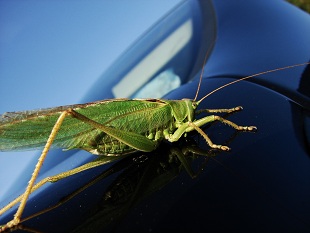Car collision avoidance sensors inspired by locusts

Related topics
Innovation Funding Researchers SMEs Transport Excellent Science Marie Skłodowska Curie actions Smart, green and integrated transport United Kingdomdate: 03/08/2014
Project: Development of the circuits in the locus...
acronym: NEURAL DEVELOPMENT
See also: CORDIS
Contact: Contact
The research started by understanding the anatomy, responses and development of the circuits in the locust brain to detect approaching objects and avoid them when in flight or on the ground. A visually stimulated motor control (VSMC) system was then created, which consists of two types of movement detectors and a simple motor command generator.
“We combined classical techniques for revealing the nerve cells in the locusts’ brain with new methods for the 3D reconstruction of nerve cell branches and connections,” says project coordinator, Dr Claire Rind, working at Newcastle University in the United Kingdom.
The team investigated neurons in the locusts' nerve cells that trigger last moment avoidance responses, such as gliding dives, during flight. Understanding these natural responses could eventually lead to similar implementation in vehicles - being able to respond swiftly during potential accident situations.
Another objective of the project was to build international skills and cooperation in the field of visual neural systems. The project’s Marie Curie research fellow, Julieta Sztarker, was part of Dr Rind’s research team.
“During the project I was trained in the use of the locusts as a model system, mastered the applications of 3D neuronal reconstruction and received training in electron microscopy methods that use beams to create an image of the specimen,” says Sztarker.
The project team at Newcastle University published a scientific paper on “collision sensing neurons during development” and Dr Rind says “others are in the pipeline as well.”
NEURAL DEVELOPMENT project was finalised in 2011. Moving forward, work on collision detection continues in follow up EU-funded projects such as LIVCODE and HAZCEPT.
